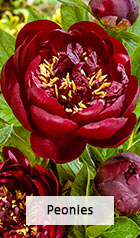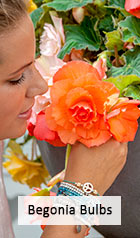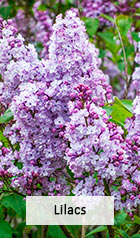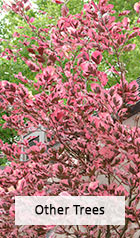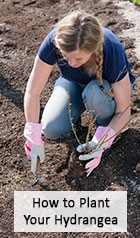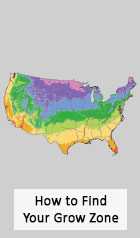- Fall Preview
- Perennials
Close X
Reliable color year after year.
- Bulbs
Close X
Fill your summer with blooms.
- Clematis & Vines
Close X
Provide ambiance and romance.
- Shrubs
Close X
Habitat, color & design possibilities.
- Trees
Close X
A gift for the next generation.
- Patio Orchard
- Fruits
- Tools & Décor
Close X
The right tools make gardening a pleasure.
- Spring Clearance
- Gardening Resources
Close X
Tips and tricks for easy, beautiful gardens.
Ornamental Trees
A gift for the next generation.

Flowering trees are a foundational background for your home and garden landscape, whether they're providing shade, creating privacy, delivering showy spring blooms or fall colors, or showing off their sheer majesty. Knowing why you want to plant an ornamental tree is important to matching the right tree to the right spot for the right reason. For example, if you desire privacy, a line of evergreens, such as cypress, may be your best bet. If you want to create curb appeal in the front of your home, small flowering trees, such as redbuds, will do the trick. If you want to shade your backyard to keep your home cool and/or create an outdoor living area, maple trees are your best bet. In matching the right flowering tree to the right spot for the right reason, know that it's an investment that you and future generations will enjoy. Consideration of your hardiness zone, and the height of the ornamental tree, spread and disease resistance, help you narrow your options and ensure the best choice. Shop for the best flowering trees for sale for your garden and yard now!
What are ornamental trees?
Ornamental trees, or flowering trees, are a category of landscape-friendly deciduous or coniferous trees grown for their flowers, shape, or leaf color. Many gardeners use ornamental trees as privacy fencing or to create shade. Simply put, ornamental trees are used to decorate the landscape, while providing all the benefits of tree growth.
Ornamental trees are available in a variety of sizes and spreads. In a small garden, a dwarf flowering tree can provide a centerpoint or backdrop for other shrubs and flowers. In a larger space, trees can be used on a greater scale to enjoy flowers that have height.
Japanese maple trees, willow trees, and redbuds are grown for their bright leaves, while weeping willows offer interesting foliage and elegant shapes. Pines and topiary plants can also be ornamentals. Magnolia trees, dogwood trees, and flowering cherry trees are also landscaping favorites grown for their gorgeous, prolific blooms.
You can find flowering trees for sale in many of the same locations where you find other ornamentals. Here at Spring Hill, we're proud to offer a variety of flowering trees for every landscape!
When to plant flowering trees:
Most flowering trees should be planted in the springtime, after frost has passed but before the weather really heats up. Adding flowering trees to your landscape in spring allows them to establish roots before the high heats of summer and the cold, slow-growing period of winter. Our ornamental trees are shipped in pots or as bare root plants when they're ready to be planted!
Where to plant flowering trees:
As you choose a location for your flowering trees, consider size, spread, soil, and sun requirements.
Before choosing an ornamental tree, consider the height and width to which the tree will grow. Many ornamentals, such as magnolias or pear trees, branch both out and up. Check for electrical wires, roofing, and other trees, and make sure that your tree won't need constant haircuts due to poor placement. Also, consider roots when talking about placement: roots that lift up from the soil can be difficult to mow and landscape around. Leave space, too, for any other improvements you're planning for your lawn and landscape.
Consider scale as you select your trees as well. If you're planting near a low-slung building, a tall tree may look out of place. If you have lots of tall plants, choose a tree that won't be dwarfed by its neighbors. You'll also want to avoid planting a flowering tree in an area with difficult cleanup: cherry blossoms falling in the air are beautiful; cherry blossoms falling into your pool are a hassle.
Ornamental trees are just as varied in their needs as other types of trees! Well-draining, fertile soil is a must for flowering trees: most varieties don't like to have soggy roots. Most flowering trees prefer plenty of light, although some with tender blooms can be burnt by direct sun. In general, flowering trees like to receive six to eight hours of sunlight each day.
Pruning flowering trees -- when and how to prune ornamental trees:
Pruning requirements vary by tree type, but many varieties of flowering trees require little pruning and are relatively carefree. However, most flowering trees will benefit from a little cleanup to encourage new growth and prevent damage and blight. Use light, annual pruning to get rid of dead and diseased wood, remove crossed branches, and help shape your ornamental plans.
If your tree does require pruning, but you don't want to miss out on blooms, prune it in late summer or early fall, after the tree's blooms have faded. Many flowering trees grow flower buds in the fall for the next springtime, so pruning after blooming prevents your lopping off all of the next season's blooms. By pruning in late fall or early summer, you can prevent losing flowers, and you can prune with the recent identification of the plant's best flowering branches.
However, if you're pruning to shape the tree, pruning in early -- when you have a bare tree and more visibility -- can be useful. In addition, winter or early-spring pruning is less likely to allow disease to take hold, as the tree won't have an "open wound" while pests and fungi are active. Pruning in the winter also ensures that an ornamental tree doesn't need to expend energy healing itself during the growing season.
When do flowering trees bloom?
Lots of flowering trees bloom all spring and into summer! Some, like crabapples and magnolias, kick off the spring season by flowering early, then settle into summer with beautiful foliage. Others, like crepe myrtle and redbuds, don't bloom until the weather begins to warm up. Many varieties of modern flowering trees have extended blooming seasons, or even rebloom! When choosing a flowering tree, be sure to consider how you want your landscape ecosystem -- all of your plants, shrubs, bulbs, and trees -- to look throughout the season.



